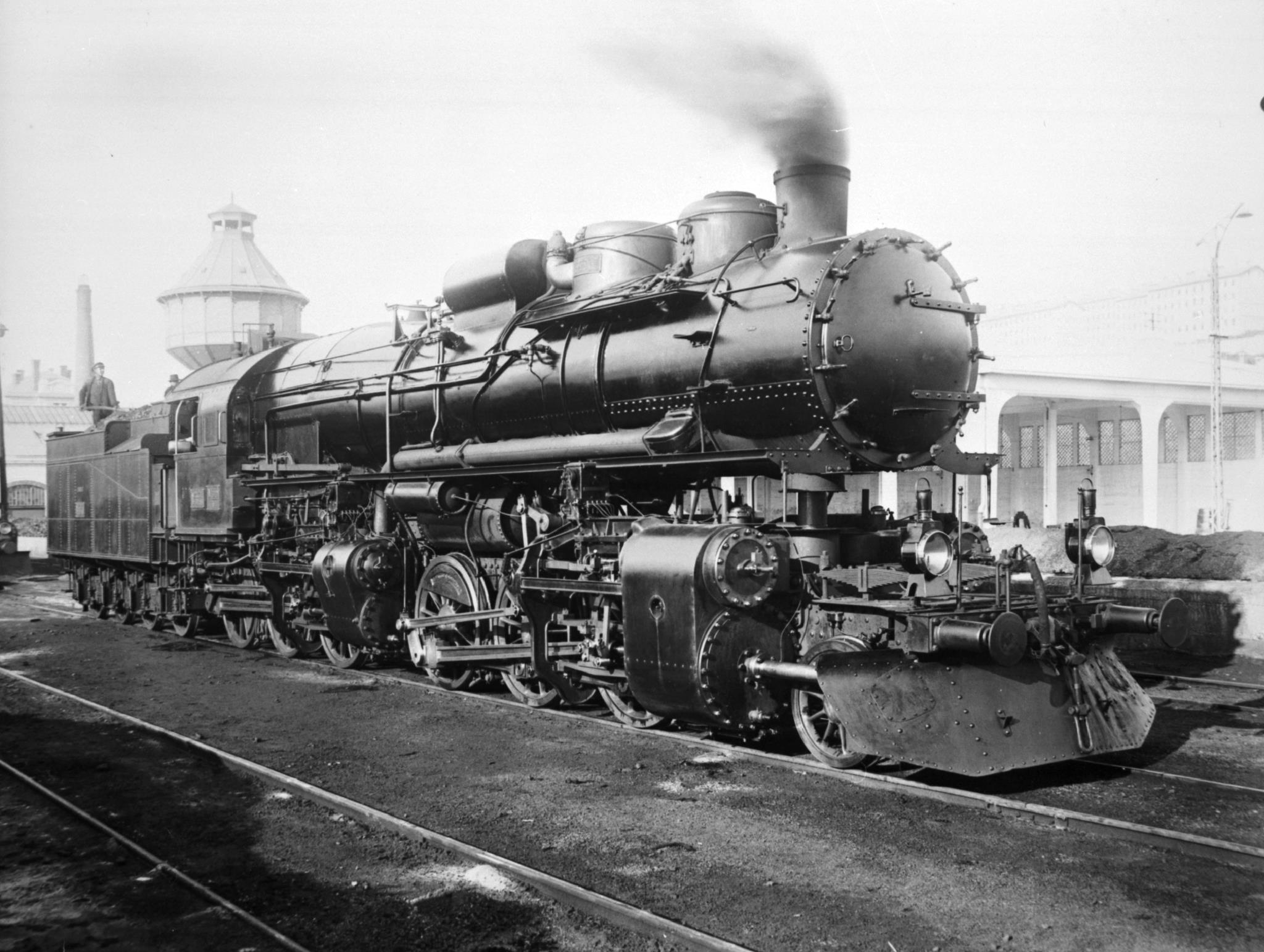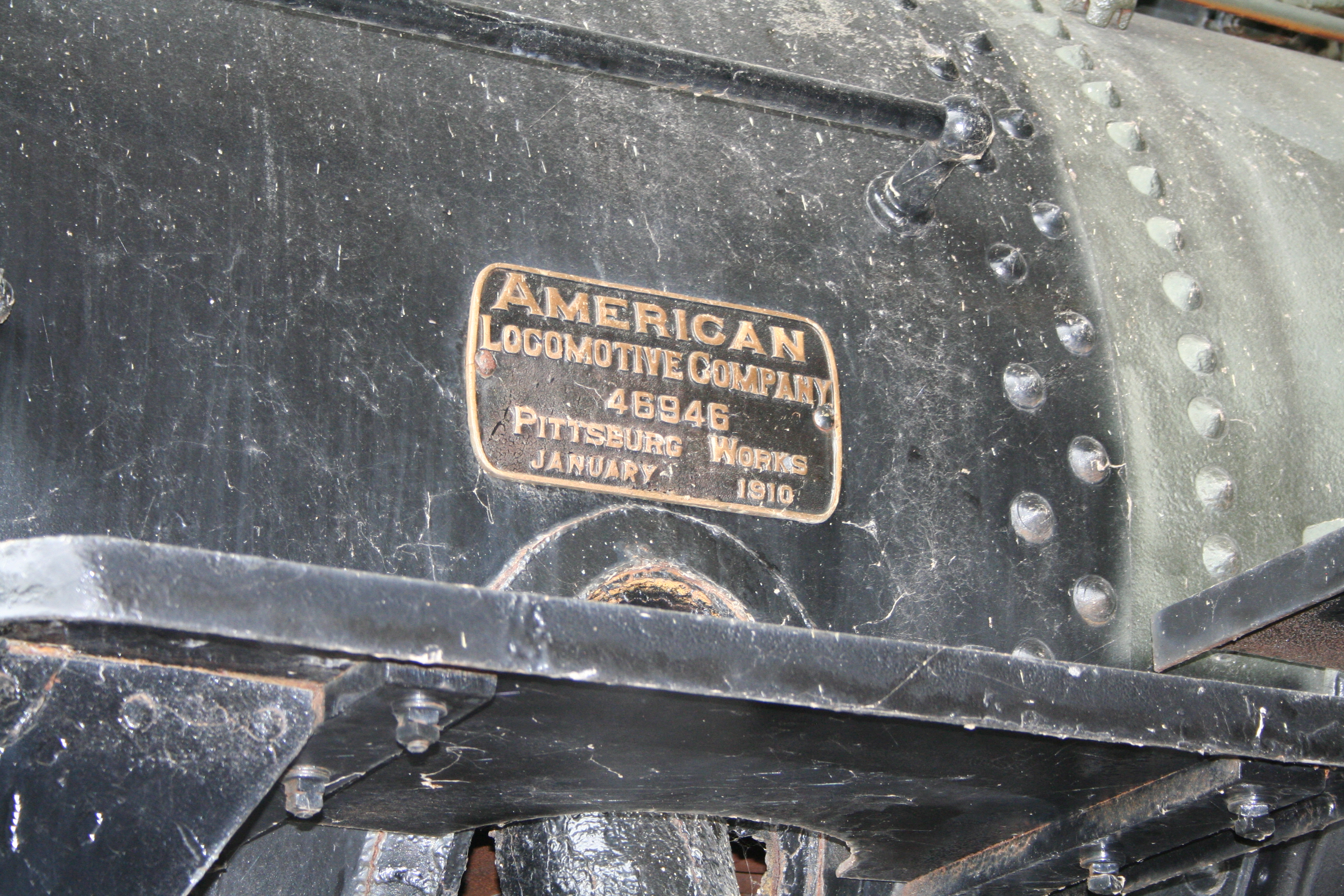|
South African Class MA 2-6-6-0
The South African Railways Class MA 2-6-6-0 of 1909 was a steam locomotive from the pre-Union era in the Natal Colony. In 1909, the Natal Government Railways placed a single Mallet articulated compound steam locomotive in service. In 1912, when it was assimilated into the South African Railways, it was renumbered and designated Class MA.Espitalier, T.J.; Day, W.A.J. (1944). ''The Locomotive in South Africa - A Brief History of Railway Development. Chapter III - Natal Government Railways'' (Continued). South African Railways and Harbours Magazine, August 1944. pp. 592-593.Classification of S.A.R. Engines with Renumbering Lists, issued by the Chief Mechanical Engineer's Office, Pretoria, January 1912, pp. 9, 12, 15, 46 (Reprinted in April 1987 by SATS Museum, R.3125-6/9/11-1000) Manufacturer As a result of a visit to the United States of America by Natal Government Railways (NGR) Locomotive Superintendent D.A. Hendrie in 1909 to study Mallet type locomotives and also American lo ... [...More Info...] [...Related Items...] OR: [Wikipedia] [Google] [Baidu] |
American Locomotive Company
The American Locomotive Company (often shortened to ALCO, ALCo or Alco) was an American manufacturer of locomotives, diesel generators, steel, and tanks that operated from 1901 to 1969. The company was formed by the merger of seven smaller locomotive manufacturers and Schenectady Locomotive Engine Manufactory of Schenectady, New York. A subsidiary, American Locomotive Automobile Company, designed and manufactured automobiles under the Alco brand from 1905 to 1913. ALCO also produced nuclear reactors from 1954 to 1962. The company changed its name to Alco Products, Incorporated in 1955. In 1964, the Worthington Corporation acquired the company. The company went out of business in 1969. The ALCO name is currently being used by Fairbanks Morse Engine for their FM, ALCO line. Foundation and early history The company was created in 1901 from the merger of seven smaller locomotive manufacturers with Schenectady Locomotive Engine Manufactory of Schenectady, New York: *Brooks Locomot ... [...More Info...] [...Related Items...] OR: [Wikipedia] [Google] [Baidu] |
Mallet Locomotive
The Mallet locomotive is a type of articulated steam railway locomotive, invented by the Swiss engineer Anatole Mallet (1837–1919). The front of the locomotive articulated on a bogie. The compound steam system fed steam at boiler pressure to high-pressure cylinders driving the rear set of driving wheels (rigidly connected to the boiler). The exhaust steam from these cylinders was fed into a low-pressure receiver and was then sent to low-pressure cylinders that powered the driving wheels on the swiveling bogie towards the front of locomotive. Compounding Steam under pressure is converted into mechanical energy more efficiently if it is used in a compound engine; in such an engine steam from a boiler is used in high-pressure (HP) cylinders and then under reduced pressure in a second set of cylinders. The lower-pressure steam occupies a larger volume and the low-pressure (LP) cylinders are larger than the high-pressure cylinders. A third stage (triple expansion) may be emp ... [...More Info...] [...Related Items...] OR: [Wikipedia] [Google] [Baidu] |
Railway Locomotives Introduced In 1909
Rail transport (also known as train transport) is a means of transport that transfers passengers and goods on wheeled vehicles running on rails, which are incorporated in tracks. In contrast to road transport, where the vehicles run on a prepared flat surface, rail vehicles ( rolling stock) are directionally guided by the tracks on which they run. Tracks usually consist of steel rails, installed on sleepers (ties) set in ballast, on which the rolling stock, usually fitted with metal wheels, moves. Other variations are also possible, such as "slab track", in which the rails are fastened to a concrete foundation resting on a prepared subsurface. Rolling stock in a rail transport system generally encounters lower frictional resistance than rubber-tyred road vehicles, so passenger and freight cars (carriages and wagons) can be coupled into longer trains. The operation is carried out by a railway company, providing transport between train stations or freight customer ... [...More Info...] [...Related Items...] OR: [Wikipedia] [Google] [Baidu] |
Cape Gauge Railway Locomotives
A cape is a clothing accessory or a sleeveless outer garment which drapes the wearer's back, arms, and chest, and connects at the neck. History Capes were common in medieval Europe, especially when combined with a hood in the chaperon. They have had periodic returns to fashion - for example, in nineteenth-century Europe. Roman Catholic clergy wear a type of cape known as a ferraiolo, which is worn for formal events outside a ritualistic context. The cope is a liturgical vestment in the form of a cape. Capes are often highly decorated with elaborate embroidery. Capes remain in regular use as rainwear in various military units and police forces, in France for example. A gas cape was a voluminous military garment designed to give rain protection to someone wearing the bulky gas masks used in twentieth-century wars. Rich noblemen and elite warriors of the Aztec Empire would wear a tilmàtli; a Mesoamerican cloak/cape used as a symbol of their upper status. Cloth and clothin ... [...More Info...] [...Related Items...] OR: [Wikipedia] [Google] [Baidu] |
ALCO Locomotives
The American Locomotive Company (often shortened to ALCO, ALCo or Alco) was an American manufacturer of locomotives, diesel generators, steel, and tanks that operated from 1901 to 1969. The company was formed by the merger of seven smaller locomotive manufacturers and Schenectady Locomotive Engine Manufactory of Schenectady, New York. A subsidiary, American Locomotive Automobile Company, designed and manufactured automobiles under the Alco brand from 1905 to 1913. ALCO also produced nuclear reactors from 1954 to 1962. The company changed its name to Alco Products, Incorporated in 1955. In 1964, the Worthington Corporation acquired the company. The company went out of business in 1969. The ALCO name is currently being used by Fairbanks Morse Engine for their FM, ALCO line. Foundation and early history The company was created in 1901 from the merger of seven smaller locomotive manufacturers with Schenectady Locomotive Engine Manufactory of Schenectady, New York: * Brooks Loc ... [...More Info...] [...Related Items...] OR: [Wikipedia] [Google] [Baidu] |
Individual Locomotives Of South Africa
An individual is that which exists as a distinct entity. Individuality (or self-hood) is the state or quality of being an individual; particularly (in the case of humans) of being a person unique from other people and possessing one's own needs or goals, rights and responsibilities. The concept of an individual features in diverse fields, including biology, law, and philosophy. Etymology From the 15th century and earlier (and also today within the fields of statistics and metaphysics) ''individual'' meant " indivisible", typically describing any numerically singular thing, but sometimes meaning "a person". From the 17th century on, ''individual'' has indicated separateness, as in individualism. Law Although individuality and individualism are commonly considered to mature with age/time and experience/wealth, a sane adult human being is usually considered by the state as an "individual person" in law, even if the person denies individual culpability ("I followed ... [...More Info...] [...Related Items...] OR: [Wikipedia] [Google] [Baidu] |
Steam Locomotives Of South Africa
Steam is a substance containing water in the gas phase, and sometimes also an aerosol of liquid water droplets, or air. This may occur due to evaporation or due to boiling, where heat is applied until water reaches the enthalpy of vaporization. Steam that is saturated or superheated is invisible; however, "steam" often refers to wet steam, the visible mist or aerosol of water droplets formed as water vapor condenses. Water increases in volume by 1,700 times at standard temperature and pressure; this change in volume can be converted into mechanical work by steam engines such as reciprocating piston type engines and steam turbines, which are a sub-group of steam engines. Piston type steam engines played a central role in the Industrial Revolution and modern steam turbines are used to generate more than 80% of the world's electricity. If liquid water comes in contact with a very hot surface or depressurizes quickly below its vapor pressure, it can create a steam explosion. Types ... [...More Info...] [...Related Items...] OR: [Wikipedia] [Google] [Baidu] |
Central South African Railways
The Central South African Railways (CSAR) was from 1902 to 1910 the operator of public railways in the Transvaal Colony and Orange River Colony in what is now South Africa. During the Anglo-Boer War, as British forces moved into the territory of the Orange Free State and the South African Republic, the Orange Free State Government Railways, the Netherlands-South African Railway Company and the Pretoria-Pietersburg Railway were taken over by the Imperial Military Railways under Lieutenant-Colonel Sir Percy Girouard. After the war had ended, the Imperial Military Railways became the Central South African Railways in July 1902, with Thomas Rees Price as general manager. With the creation of the Union of South Africa in 1910, the CSAR was merged with the Cape Government Railways and the Natal Government Railways to form the South African Railways, which is now Transnet Freight Rail. References Further reading * Defunct railway companies of South Africa Railway companies estab ... [...More Info...] [...Related Items...] OR: [Wikipedia] [Google] [Baidu] |
Cape Government Railways
The Cape Government Railways (CGR) was the government-owned railway operator in the Cape Colony from 1874 until the creation of the South African Railways (SAR) in 1910. History Private railways The first railways at the Cape were privately owned. The Cape Town Railway and Dock Company started construction from Cape Town in 1859, reaching Eerste River by 1862 and Wellington by 1863. Meanwhile, by 1864, the Wynberg Railway Company had connected Cape Town and Wynberg. For the moment, railway development at the Cape did not continue eastwards beyond Wellington because of the barrier presented by the mountains of the Cape Fold Belt. Formation of CGR The discovery of diamonds, and the consequent rush to Kimberley that started in 1871, gave impetus to the development of railways in South Africa. Shortly afterwards, in 1872, the Cape Colony attained responsible government under the leadership of Prime Minister John Molteno, who presented plans for an enormous network of railways ... [...More Info...] [...Related Items...] OR: [Wikipedia] [Google] [Baidu] |
Cape Gauge
A cape is a clothing accessory or a sleeveless outer garment which drapes the wearer's back, arms, and chest, and connects at the neck. History Capes were common in medieval Europe, especially when combined with a hood in the chaperon. They have had periodic returns to fashion - for example, in nineteenth-century Europe. Roman Catholic clergy wear a type of cape known as a ferraiolo, which is worn for formal events outside a ritualistic context. The cope is a liturgical vestment in the form of a cape. Capes are often highly decorated with elaborate embroidery. Capes remain in regular use as rainwear in various military units and police forces, in France for example. A gas cape was a voluminous military garment designed to give rain protection to someone wearing the bulky gas masks used in twentieth-century wars. Rich noblemen and elite warriors of the Aztec Empire would wear a tilmàtli; a Mesoamerican cloak/cape used as a symbol of their upper status. Cloth and cloth ... [...More Info...] [...Related Items...] OR: [Wikipedia] [Google] [Baidu] |







